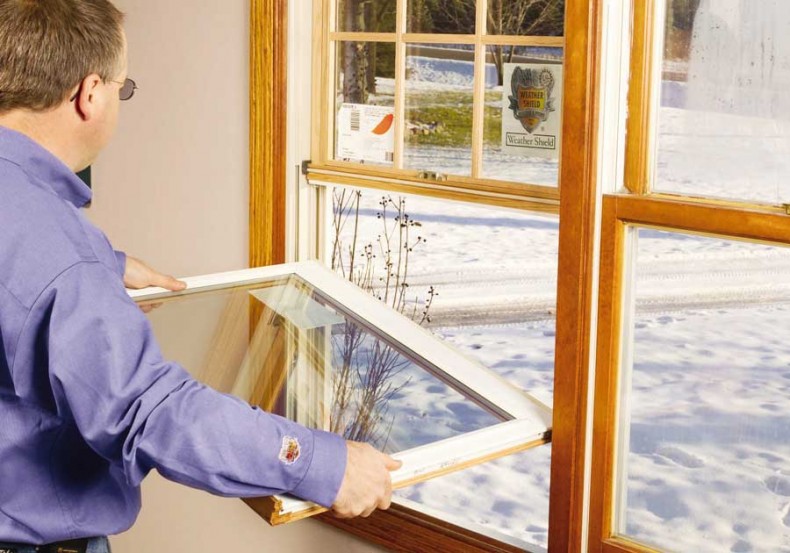See Through
The character, comfort and costs of your windows
By Hannah McKenzie
Tilt-in, double pane, sash-only replacement kits provide a convenient way to convert old windows into efficient ones, if your existing frames are in good condition.
Windows can be a thorn in the side of homeowners. They are expensive to replace, time consuming to maintain and often don't provide enough energy savings to fully cover these costs. On the other hand, we thrive with natural light inside our homes, we love when windows are not drafty, and we are pleasantly surprised when they muffle obnoxious sounds from outside.
Repairing or replacing windows will nearly always improve looks, comfort and energy efficiency, though the amount of improvement dramatically varies from window to window and home to home.
Considering your windows
Window frames are typically one of three materials: wood, metal or vinyl. Wood and metal frames usually can be repaired and improved. Unlike wood window frames, metal window frames in homes have the added complexity of transferring heat—making you feel colder in the winter and warmer in the summer. Vinyl window frames are often impossible to repair and will warrant replacement of the entire window unit.
Window glass is either single, double or triple panes. Single pane windows were commonly installed until the 1970s when double pane glass became the norm. Triple pane windows are widely available and found in high-end homes.
What to do?
Before replacing windows for energy efficiency alone, priority should be given to a top-notch energy audit and repair of your home's ceiling, floors and walls by sealing holes, improving attic insulation and sealing HVAC ductwork. Assess each window individually as you consider your time, ability, budget and aesthetic goals. Often homes have a mix of replaced and repaired windows.
A 2002 study showed that installing a storm window with low-e coating over a historic window can yield the same efficiency as a replacement window. Low-e storm windows can save 12 to 33 percent a year in heating and cooling costs. If you plan to go the repair route, visit the U.S. Department of the Interior's Technical Preservation Services to see assessment, repair and upgrade tips.
Replacing windows is alluring when you have severely dilapidated windows and limited time. Instead of scraping paint, replacing glazing putty, replacing the glass you break while removing glazing putty, multiple coats of paint, caulking, weather stripping and sash repair, a workman shows up and has the old window out and the new window installed within a matter of minutes.
When repairing or replacing windows, be mindful that lead dust can cause irreversible neurological damage to a baby in utero and children. Contact your county health department so you know how to proceed safely.
Each situation is unique but rest assured you can proceed with confidence that a quality repair or replacement will improve looks, comfort and even yield energy savings.
Repairing windows (wood and metal frame)
| Pros | Cons |
|---|---|
| Window units may last for the life of the home | Routine maintenance every few years |
| Do-it-yourself | Costly if you hire someone |
| Repairable | Time consuming |
| Preserves historic character | Cost of purchasing low-e storm windows |
Replacing windows (any kind)
| Pros | Cons |
|---|---|
| Quick makeover | Expensive |
| No muss, no fuss | May not be repairable, which will require replacement anywhere from two to 20 years |
Learn more: energy.gov
-
Share this story:


